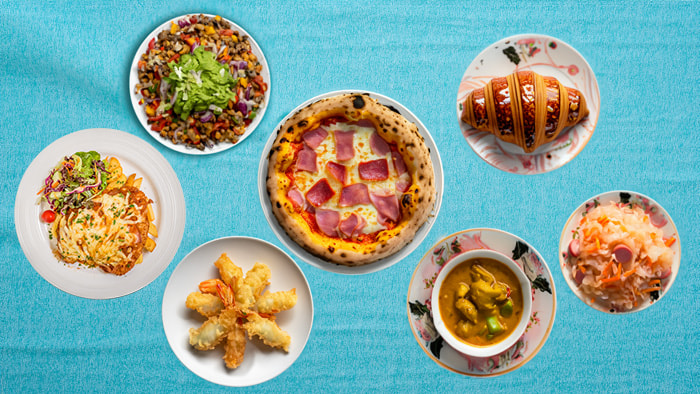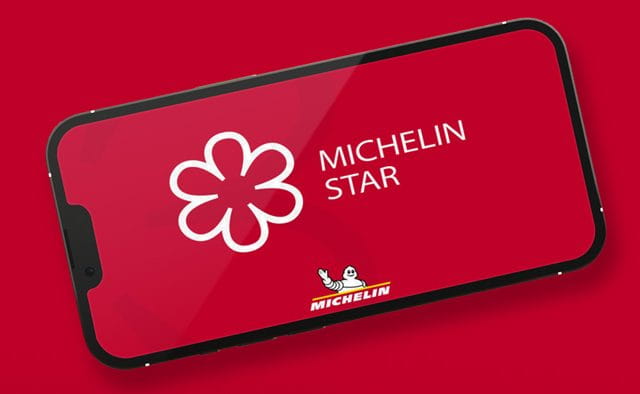Get ready for a culinary journey that will tickle your taste buds and challenge everything you thought you knew about your favorite dishes! We’ve all been there, savoring a plate of something delicious, believing we’re indulging in a piece of authentic culinary history from a specific part of the world. But what if I told you that some of the most iconic dishes we associate with certain countries have a backstory more twisted than a piece of fusilli pasta?
In this mouth-watering article, we’re diving deep into the origins of seven famous dishes that have played a game of geographical musical chairs over the centuries. So, buckle up and prepare your palate for a surprising ride through the world of gastronomy as we uncover the true roots of these delectable dishes. Who knows, you might just find yourself second-guessing the origin of your next meal!
1. Hawaiian Pizza: A Canadian Creation

Let’s kick things off with a dish that has sparked countless debates around the dinner table: the Hawaiian pizza. This cheesy, ham-topped delight, adorned with juicy pineapple chunks, has been a subject of culinary controversy for years. But did you know that this tropical-sounding pizza actually hails from the chilly lands of Canada? In 1962, a Greek immigrant named Sam Panopoulos decided to throw some canned pineapple on a pizza at his restaurant in Ontario. The rest, as they say, is history. The sweet and savory combination was a hit, and Hawaiian pizza has been a staple on pizzeria menus ever since.
Before the pizza purists out there start shaking your heads in disbelief, let’s take a moment to appreciate the boldness of this culinary experiment. It’s not every day that someone decides to challenge the traditional pizza toppings and create something so polarizing. Whether you’re a fan or a staunch opponent of pineapple on pizza, there’s no denying that the Hawaiian pizza has made its mark on the fast-food world. It has proven that sometimes, the most unexpected combinations can lead to the tastiest surprises.
2. Croissants: Baked with Austrian Inspiration

Next on our list is the croissant, a buttery, flaky pastry that has become synonymous with French breakfasts. However, its origins are not as French as you might think. The croissant was actually inspired by the Austrian “kipferl”, a crescent-shaped pastry that dates back to at least the 13th century. It wasn’t until the 17th century, when an Austrian princess married a French king, that the kipferl found its way to France. The French bakers added their own twist to the recipe. They used a laminated dough technique, resulting in the light, airy layers that croissants are famous for today.
So, while we may associate croissants with charming Parisian cafes and the Eiffel Tower, let’s not forget the Austrian roots of this beloved pastry. The next time you bite into a warm, buttery croissant, take a moment to appreciate the centuries-old journey it took to get to your plate. From the bakeries of Austria to the patisseries of France, the croissant is a delicious reminder that good things come to those who innovate and adapt.
3. Vindaloo: A Portuguese Legacy in India

Now, let’s spice things up a bit with Vindaloo, a fiery dish that is a staple in Indian cuisine, particularly in the region of Goa. However, we can trace its roots back to Portugal. The dish was originally known as “carne de vinha d’alhos”, a Portuguese delicacy made with meat marinated in wine and garlic. When the Portuguese colonized India in the 15th century, they brought this dish with them, and it underwent a remarkable transformation. The locals added a variety of Indian spices and substituted palm vinegar for the red wine, giving birth to the Vindaloo we know today.
The Vindaloo of today is a harmonious blend of Portuguese tradition and Indian innovation, with a spicy kick that is not for the faint of heart. It’s a testament to the power of cultural exchange and the beauty of culinary evolution. So, the next time you find yourself sweating over a bowl of Vindaloo, remember to pay your respects to the Portuguese origins of this spicy delight. Appreciate the Indian twist that has made it a global favorite.
4. Sauerkraut: Fermented Perfection from China

Moving on to a dish that’s a staple in German cuisine. Sauerkraut, which translates to “sour cabbage,” has a history that might surprise you. While it has been a beloved side dish in Germany for centuries, its origins can actually be traced back over 2,000 years to China. The Chinese began fermenting cabbage in rice wine, creating a nutritious dish that could be preserved for long periods. This preservation method was particularly useful during the construction of the Great Wall of China, where feeding thousands of workers in remote areas was a logistical challenge.
So, the next time you find yourself enjoying a hearty plate of sausages and sauerkraut, remember to tip your hat to the ancient Chinese innovators who first discovered the magic of fermented cabbage. It’s a dish that has traveled through time and across continents, adapting and evolving along the way. However, it remains a beloved and nutritious staple. Prost to that!
5. Fajitas: Tex-Mex Delight from Houston

As we continue our culinary expedition, let’s head to the vibrant kitchens of Texas, where the sizzling dish of fajitas was born. Contrary to popular belief, fajitas are not a traditional Mexican dish but a Tex-Mex creation. They originated in the 1930s in the ranch lands of South and West Texas. Initially, it was a way to use the less desirable cuts of beef, such as skirt steak, which was marinated, grilled, and served with a flourish on a tortilla. The dish was a hit among the local Hispanic ranch workers, and it didn’t take long for fajitas to make their way to the mainstream, becoming a staple in Tex-Mex cuisine.
Today, fajitas are celebrated for their simplicity and bold flavors. They are a true testament to the ingenuity of Texan cooks who transformed humble ingredients into a dish beloved worldwide. So, whether you prefer your fajitas with beef, chicken, or a medley of vegetables, remember to savor the rich history and Texan spirit that comes with every bite. Yee-haw and buen provecho!
6. Tempura: A Portuguese Technique Adopted by Japan

Next up, we delve into the crispy, golden world of Tempura, a dish that many associate with Japanese cuisine. However, its origins are surprisingly Portuguese. In the 16th century, Portuguese missionaries in Nagasaki introduced the technique of batter-frying food as a way to enjoy meat during Lent. The Japanese, always open to adopting and refining foreign culinary practices, embraced this method and applied it to seafood and vegetables. The result? Tempura, a dish that has become a cornerstone of Japanese cuisine, celebrated for its light, crispy batter and delicate flavors.
So, while we often praise Tempura as a quintessentially Japanese dish, it’s important to tip our hats to the Portuguese influence that played a crucial role in its creation. It’s a delicious example of how culinary traditions can cross borders, blend together, and create something truly extraordinary. So, the next time you enjoy a plate of Tempura, remember to savor not just the flavors, but the rich, cross-cultural history that it represents.
7. Chicken Parmi/Parm: An Italian Dish with an Aussie Twist

Finally, we land down under to explore the Chicken Parmi or Parm, a pub favorite in Australia. While Aussies might claim this cheesy, tomatoey delight as their own, its roots actually lie in Italian cuisine. The dish is a spin-off of the ‘parmigiana di melanzane’, which features breaded eggplant slices layered with cheese and tomato sauce. When Italian immigrants brought this dish to Australia, they swapped the eggplant for chicken, and the Chicken Parmi was born. Served with a side of chips and salad, it’s become a beloved staple in Australian pubs and homes alike.
So, while the Chicken Parmi might feel as Australian as kangaroos and surfboards, it’s important to remember its Italian heritage. It’s a delicious reminder of how food can travel, adapt, and become a beloved part of a new culture, all while retaining a piece of its history. So, the next time you’re enjoying a Chicken Parmi, take a moment to appreciate the culinary journey it’s been on, from the kitchens of Italy to the pubs of Australia.
As we wrap up our gastronomic journey, it’s clear that food origins can be full of surprises. From Hawaiian pizza’s Canadian origins to Chicken Parmi’s Italian roots, each dish tells a story of cultural exchange, innovation, and the universal love of good food. So, the next time you tuck into a meal, whether at your local fast-food restaurant or one of the top 7 Michelin restaurants in the US, remember that its history might be as rich and flavorful as the food on your plate.




